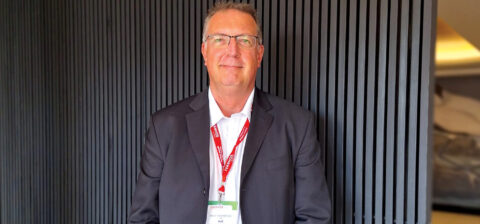SA Mining
Mitigating CO² Emissions While Enabling The JET
The economic impact of coal across local communities should not be underestimated, particularly in light of the fact that close to a quarter of a million workers are employed in the coal industry. Thus, any discontinuation of this fossil fuel cannot be spoken of without considering its socio-economic impact.
Nonetheless, South Africa – like the rest of the world – is eager to find lasting solutions that protect its environment and reduce greenhouse carbon emissions.
The Council for Geoscience (CGS), with over 111 years of geoscience knowledge and experience, remains fully committed to finding new technologies that will enhance environmentally friendly energy sources. Sustainable solutions are needed though. One of these, currently considered globally as a key solution, is Carbon Capture, Utilisation and Storage (CCUS).
Globally, hydrocarbons like coal and oil have been largely depended on for more than a century, and South Africa is no exception. It’s nearly 30 years since the United Nations Framework Convention on Climate Change (UNFCCC) was initiated, and most member states are signatories. The UNFCCC calls on members to act in the interest of their citizenry and humanity at large.
Advances in CCUS technology globally, including in countries like the United States (US), Norway and Canada, have proven that the technology is a feasible alternative to reducing CO² emissions through utilisation and underground storage in suitable geological formations. Once underground, the CO² interacts with the geological environment and mineralises, which reduces the risks associated with leakage.
CCUS’s intention is to capture CO² from the source, such as the fired power plants, and transport it to carefully selected geological sites for permanent storage, which is supported by an extensive monitoring of the process, from the start to post injection and storage.
The CGS has recently commenced with geological characterisation of an identified potential site in Leandra, Govan Mbeki Local Municipality, in Mpumalanga. Here, consultations with myriad stakeholders from three government spheres, along with local traditional leaders, communities, environmental non-governmental organisations, and farmers and local businesses, have borne fruit. This is due to the long-term goal, which is to see the community benefit from this development.
Govan Mbeki Local Municipality, meanwhile, has contributed a piece of land for this research to be implemented. The identified site has taken into consideration all factors such as location, geology, socio-economic and technological aspects to make a pilot feasible, thus a site proximal to CO² emitters.
Two-pronged approach
The two-pronged approach then sees the CGS being on the drive to make South Africans aware of the CCUS technology. There is no doubt this technology is encouraging, though we need to be mindful that it may take time before we see the commercial benefits and return on investment, notes the CGS.
The models that have worked in countries such as the US cannot be readily assumed to also work in South Africa. Hence, the CGS and other scientists are investing time and effort in extensive techno feasibility studies and technological disruptions, particularly adaptable to sites in South Africa, both on- and off-shore. This is in line with the fact that the country has already pledged to cut CO² emissions by 50% by 2030, which is eight years from now.
The truth about coal is that it is affordable. There are enough coal companies in South Africa, employing tens of thousands of citizens, although today, financing development of coal projects has become increasingly challenging, with financing institutions investigating how best to contribute towards the reduction of greenhouse emissions. Technologies need to be applied on how best to use coal, as we transition towards a low-carbon economy. The big question is whether this just transition can be done sustainably, justly and justifiably.
Once we have figured out the nature of this reduction intervention, such a breakthrough will not only benefit Eskom, communities, and business, but will also go a long way in the commitment we have made when it comes to CO² emissions. As Eskom unbundles into three divisions, it is hoped these would be synced to address this long-standing problem, as Eskom continues to operationally rely on coal.
The technology associated with CCUS is centrally developed as an economic contributor that aims to do better and contribute generously towards the country’s gross domestic product. In this regard, the South African government assigned the CGS as an implementing agent for the CCUS research in partnership with the World Bank.
The CGS has further developed a network of private business partnerships that span the Development Bank of Southern Africa, Sasol and Exxaro, while others are still in the pipeline for finalisation. With such partners, this intervention is guaranteed to benefit from collective wisdom, resource crowding and accelerated implementation of ideas and technological applications.
The CCUS project has underlined how pivotal South Africa’s commitment to reducing greenhouse gas emissions is. The project directly responds to government’s call that innovative solutions are sought for a transition to a low-carbon economy.
It’s a question that cannot be brushed aside, and one that a project such as CCUS aims to answer as it undertakes to be part of a solution that will ultimately benefit the entire country. Moreover, it has been proven from other parts of the world that CCUS could be a viable option.
The CGS’s aim, though, is to not only copy from the work that’s already begun in other parts of the world, but endeavour to deliver a project that takes into account our diverse geology, unique environment, and overall technical excellence of our South African institutions.







 Sign-up and receive the Business Media MAGS newsletter OR SA Mining newsletter straight to your inbox.
Sign-up and receive the Business Media MAGS newsletter OR SA Mining newsletter straight to your inbox.